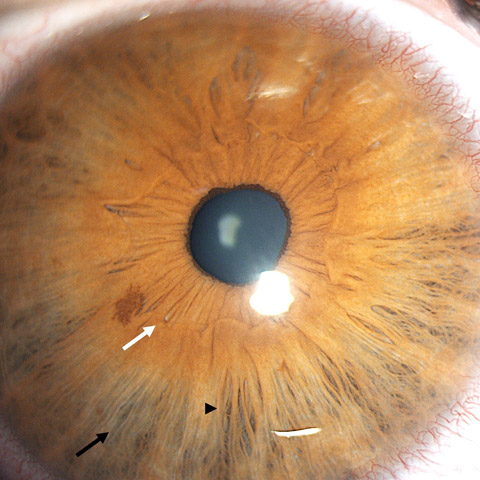Stellate iris pattern and retinal arteriolar tortuosity in Williams-Beuren syndrome
Main Article Content
Abstract
A 15-year-old boy with Williams-Beuren syndrome (WBS; OMIM #194050) presented for routine ophthalmic examination and was found to have stellate iris pattern and retinal arteriolar tortuosity. WBS is a rare autosomal dominant disorder caused by hemizygous microdeletion of approximately 1.5-1.8 million base pairs on chromosome 7q11.23, a region containing 26-28 genes, including the ELN gene responsible for encoding elastin, an essential component of elastic fibers throughout the body. WBS is a multisystem disorder characterized by dysmorphic features, supravalvular aortic stenosis, intellectual deficiency, hypersocial behavior, and hypercalcemia. Ophthalmological involvement in WBS includes stellate iris pattern, strabismus, hyperopia, and retinal vascular tortuosity. The stellate pattern is more easily identified in lighter irides and is due to prominent Fuchs’ crypts, iris stromal hypoplasia, and iris collarette absence or hypoplasia. Alternatively, the iris collarette may be peripherally displaced or have a lacy appearance.
Downloads
Article Details

This work is licensed under a Creative Commons Attribution-NonCommercial-NoDerivatives 4.0 International License.
